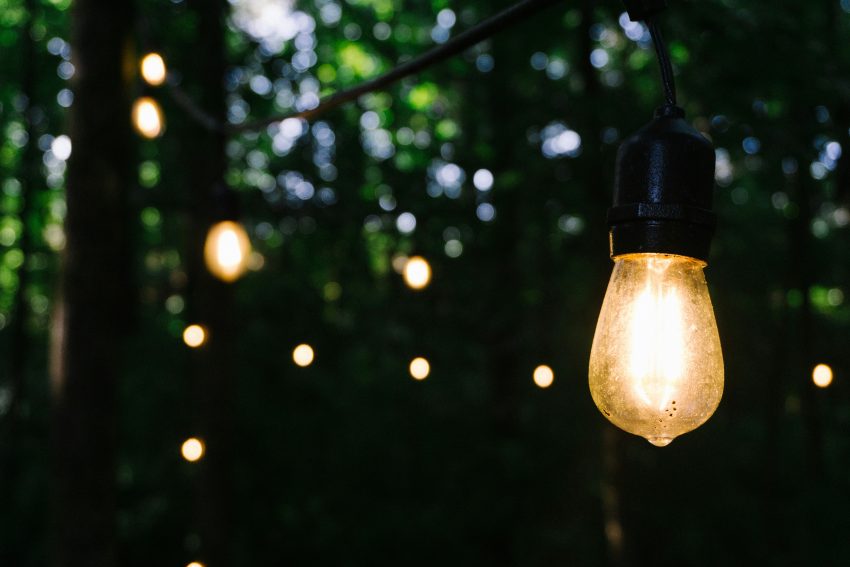To choose the perfect outdoor lighting for your home, start by evaluating your yard layout and identifying key areas that need illumination for safety and style. Consider various lighting types, from path lights to floodlights, to enhance both security and ambiance. Opt for energy-efficient options like LEDs or solar lights to save on energy costs. Finally, make sure the style complements your home’s architecture. There’s more to explore to achieve a beautifully lit outdoor space.
Assessing Your Outdoor Space
When it comes to outdoor lighting, evaluating your space is essential. Start by considering the layout of your yard, including pathways, gardens, and seating areas. Identify zones that require illumination, such as entrances and outdoor living spaces. Think about the existing natural light and how it changes throughout the day; this’ll help you determine where additional lighting is necessary.
Next, assess the architectural features of your home. Highlighting unique elements can enhance your property’s curb appeal while providing security. Don’t forget to take into account any landscaping that may cast shadows or create dark spots. By understanding your space’s specific needs, you can make informed decisions about the types of lighting that’ll best enhance safety and aesthetics.
Understanding Different Types of Outdoor Lighting
Understanding the types of outdoor lighting available is key to enhancing both the safety and beauty of your home. You’ll find several categories of outdoor lighting to evaluate. Path lights illuminate walkways, guiding guests safely while adding charm. Floodlights provide broad illumination for larger areas, perfect for security and visibility. Wall-mounted lights can accentuate architectural features, creating a welcoming ambiance. Deck and patio lights enhance outdoor living spaces, making them enjoyable after dark. Finally, landscape lighting highlights your garden’s beauty, bringing depth and interest to your outdoor design. By knowing these options, you can choose the right fixtures that not only meet your aesthetic needs but also contribute to a well-lit, functional outdoor environment.
Prioritizing Safety and Security
Prioritizing safety and security in your outdoor lighting choices is essential for creating a secure environment around your home. Start by installing motion-sensor lights near entry points to deter potential intruders. These lights automatically illuminate when they detect movement, making it less likely for anyone to approach unnoticed. Additionally, consider using floodlights to light up larger areas, ensuring that dark corners and pathways are well-lit. It’s also wise to install lights with timers or smart technology, allowing you to control your lighting remotely or set schedules. Don’t forget about ambient lighting; well-lit landscapes can enhance visibility, making your property safer. By thoughtfully selecting outdoor lighting, you not only enhance security but also improve overall comfort and peace of mind.
Considering Energy Efficiency
While enhancing safety and security with outdoor lighting is important, considering energy efficiency can greatly impact both your utility bills and the environment. When selecting outdoor lights, opt for LED fixtures, which use considerably less energy than traditional incandescent bulbs and last much longer. You’ll find that the initial investment pays off over time through reduced electricity costs. Additionally, consider installing solar-powered lights, which harness sunlight, eliminating energy bills altogether. Incorporating motion sensors can help, too; they guarantee lights only activate when needed, conserving energy. By prioritizing energy-efficient options, you not only lower your carbon footprint but also create a more sustainable outdoor space. Remember, smart choices in outdoor lighting can lead to both savings and a greener planet.
Choosing the Right Style and Design
How can you guarantee your outdoor lighting complements your home’s aesthetic? Start by identifying the architectural style of your home—whether it’s modern, traditional, or rustic—and choose fixtures that reflect that style. For instance, sleek, minimalist designs work well with contemporary homes, while ornate lanterns suit classic architecture. Consider the materials, too; metals, wood, or glass should harmonize with your existing elements. Color temperature matters as well; warm tones create a cozy atmosphere, while cooler tones provide a more modern feel. Finally, think about scale; oversized fixtures can overwhelm a small space, while tiny lights might get lost in larger areas. By focusing on these aspects, you can guarantee your outdoor lighting enhances your home’s beauty and character.
Planning the Layout and Placement
Where should you start when planning the layout and placement of your outdoor lighting? Begin by evaluating the areas you want to illuminate. Focus on pathways, entryways, and any features you want to highlight, like trees or sculptures. Consider the function of each light; task lighting is essential for safety, while accent lighting enhances aesthetics.
Next, think about the height and distance of your fixtures. Aim for a balance that prevents glare while providing adequate illumination. Use a mix of lighting types, like wall-mounted fixtures for up-lighting and ground lights for down-lighting. Finally, sketch a rough layout to visualize the placement. Proper planning guarantees your outdoor space is both functional and inviting when the sun goes down.
Maintaining Your Outdoor Lighting
To keep your outdoor lighting functioning effectively and looking its best, regular maintenance is essential. Start by checking bulbs periodically; replace any that are burnt out to guarantee consistent illumination. Cleaning fixtures is equally important—dust and debris can accumulate, diminishing their brightness. Use a soft cloth and mild soap for this task, avoiding harsh chemicals that could damage the finish. Inspect wiring and connections for signs of wear or damage; frayed wires should be replaced promptly to prevent safety hazards. Additionally, consider seasonal adjustments—trimming back overgrown vegetation can improve light distribution. Finally, test timers and sensors to verify they’re operating correctly, as this can save energy and enhance your home’s security. Regular upkeep will keep your outdoor lighting shining brightly.

